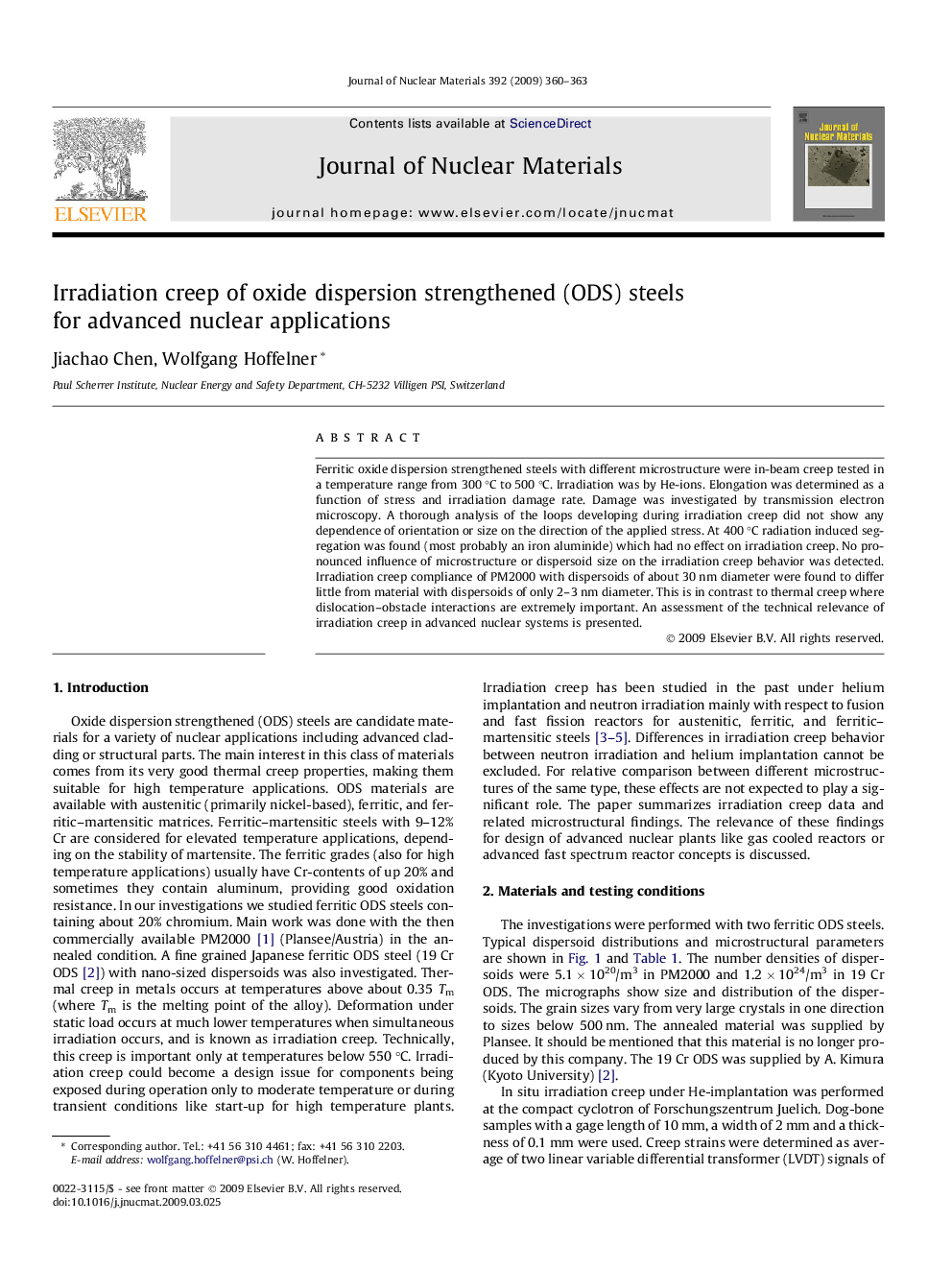| Article ID | Journal | Published Year | Pages | File Type |
|---|---|---|---|---|
| 1568434 | Journal of Nuclear Materials | 2009 | 4 Pages |
Ferritic oxide dispersion strengthened steels with different microstructure were in-beam creep tested in a temperature range from 300 to 500 °C. Irradiation was by He-ions. Elongation was determined as a function of stress and irradiation damage rate. Damage was investigated by transmission electron microscopy. A thorough analysis of the loops developing during irradiation creep did not show any dependence of orientation or size on the direction of the applied stress. At 400 °C radiation induced segregation was found (most probably an iron aluminide) which had no effect on irradiation creep. No pronounced influence of microstructure or dispersoid size on the irradiation creep behavior was detected. Irradiation creep compliance of PM2000 with dispersoids of about 30 nm diameter were found to differ little from material with dispersoids of only 2–3 nm diameter. This is in contrast to thermal creep where dislocation–obstacle interactions are extremely important. An assessment of the technical relevance of irradiation creep in advanced nuclear systems is presented.
